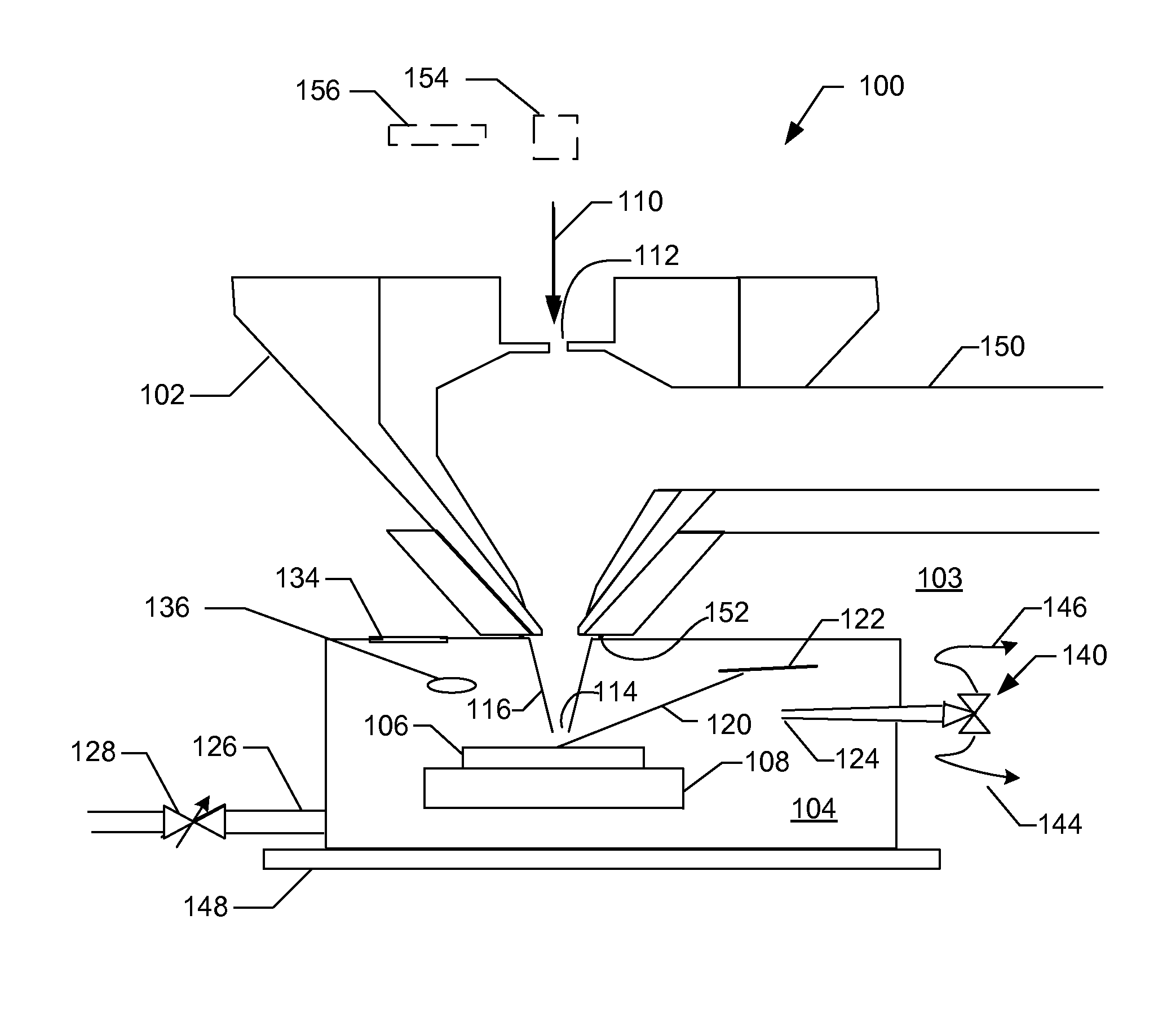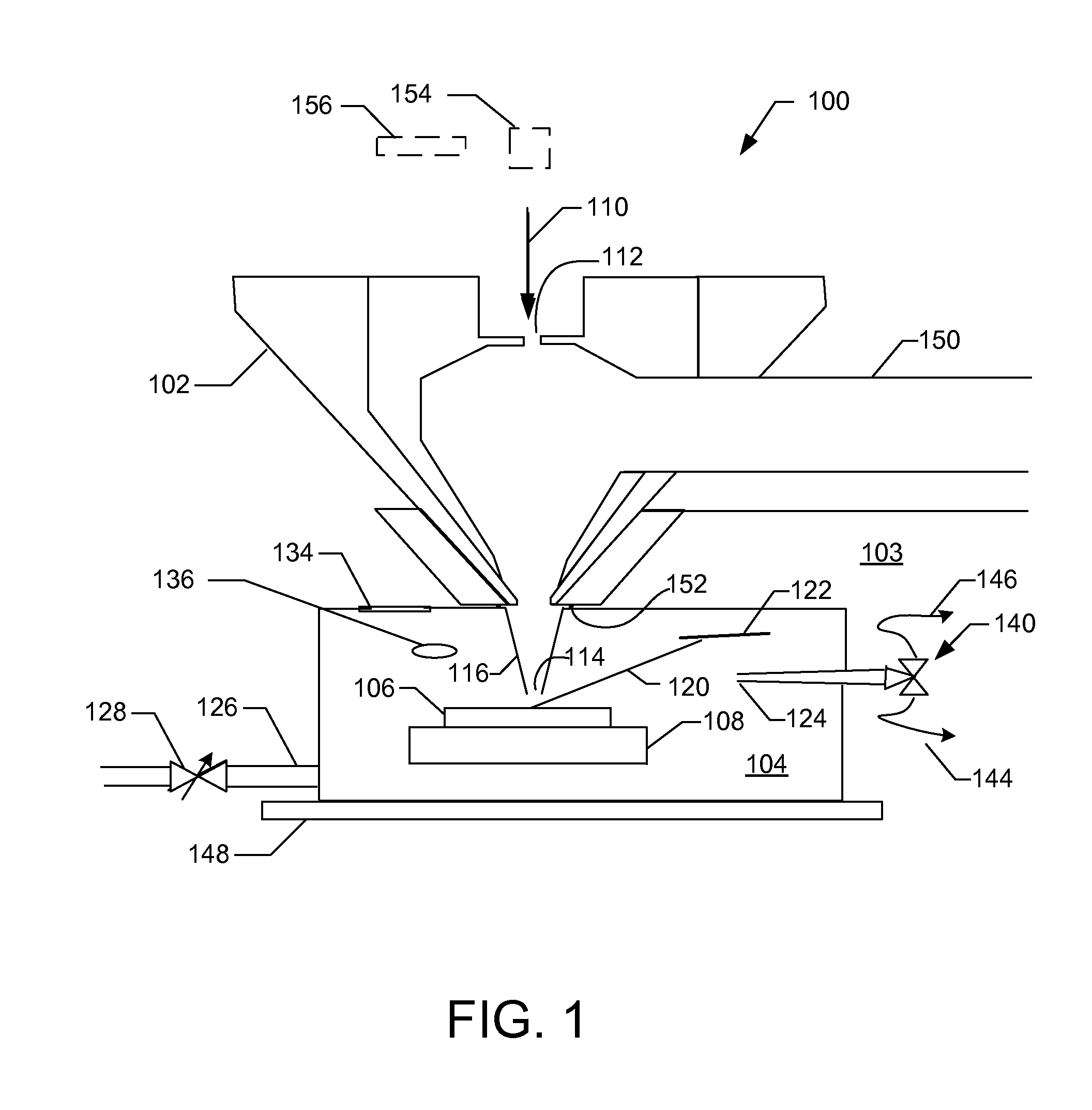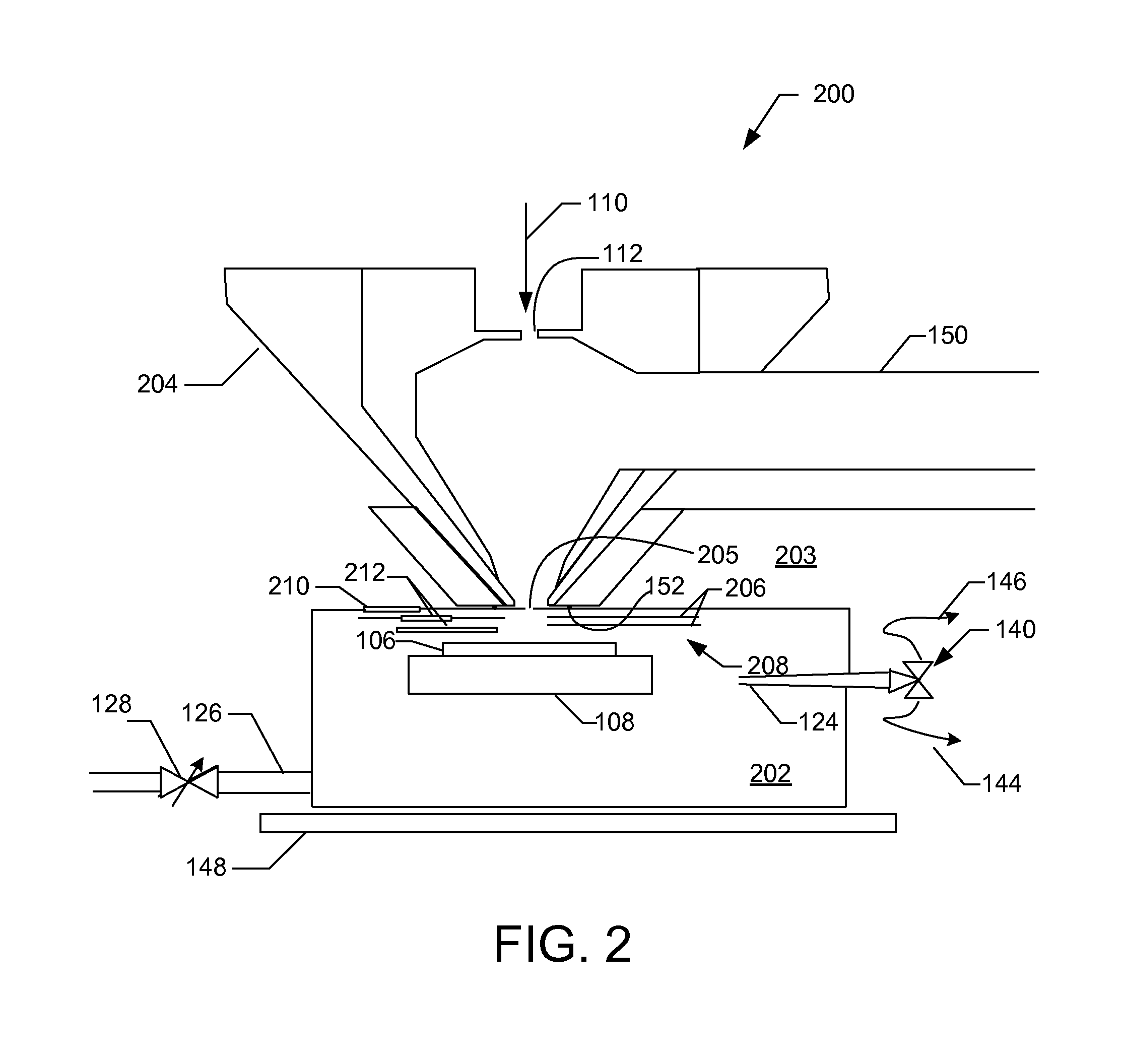High pressure charged particle beam system
a particle beam and high-pressure technology, applied in the field of electron microscopes, can solve the problems of affecting the operation of hpsem, affecting the quality of hpsem, and not being suitable for high-vacuum observation of wet samples such as biological specimens, so as to facilitate rapid introduction, exhaustion, and switching
- Summary
- Abstract
- Description
- Claims
- Application Information
AI Technical Summary
Benefits of technology
Problems solved by technology
Method used
Image
Examples
Embodiment Construction
[0027]Various embodiments can solve one or more of the problems associated with HPSEM systems for imaging and beam chemistry. There are several advantages to using an HPSEM for beam chemistry. Unlike high vacuum SEM beam chemistry processing in which the processing rate is limited by the rate at which the relatively low flux of precursor molecules arrives at the substrate, processing in an HSPEM at high electron fluxes is not so limited. Moreover, an HPSEM provides for charge neutralization during processing. With some process gases, the effect on the sample can be changed from etching to deposition by changing the primary beam current density. Moreover, the pressure at the sample can be measured unambiguously by measuring the cell background pressure.
[0028]Embodiments of the invention use a cell in which a sample is positioned for charged particle beam processing. The cell is typically positioned in a sample chamber of charged particle beam system, although the sample chamber itsel...
PUM
| Property | Measurement | Unit |
|---|---|---|
| pressure | aaaaa | aaaaa |
| pressure | aaaaa | aaaaa |
| pressure | aaaaa | aaaaa |
Abstract
Description
Claims
Application Information
 Login to View More
Login to View More - R&D
- Intellectual Property
- Life Sciences
- Materials
- Tech Scout
- Unparalleled Data Quality
- Higher Quality Content
- 60% Fewer Hallucinations
Browse by: Latest US Patents, China's latest patents, Technical Efficacy Thesaurus, Application Domain, Technology Topic, Popular Technical Reports.
© 2025 PatSnap. All rights reserved.Legal|Privacy policy|Modern Slavery Act Transparency Statement|Sitemap|About US| Contact US: help@patsnap.com



